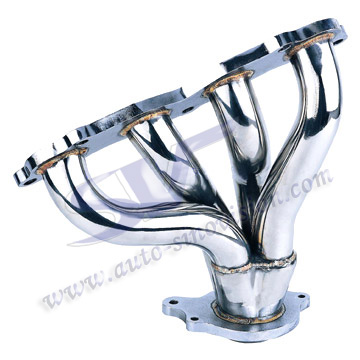The exhaust manifold, which is connected with the engine cylinder block, collects the exhaust of each cylinder and leads it to the exhaust manifold, with divergent pipelines. The main requirements for it are to minimize exhaust resistance and avoid mutual interference between cylinders. When the exhaust is too concentrated, the cylinders will interfere with each other, that is, when a cylinder is exhausting, it happens to encounter the exhaust gas from other cylinders that has not been exhausted. In this way, the exhaust resistance will be increased and the output power of the engine will be reduced. The solution is to separate the exhaust of each cylinder as far as possible, one branch for each cylinder, or one branch for two cylinders. In order to reduce exhaust resistance, some racing cars use stainless steel pipes to make exhaust manifolds.

The function of the intake manifold is to distribute the combustible mixture supplied by the carburetor to each cylinder. The function of the exhaust manifold is to collect the exhaust gas after the operation of each cylinder, send it to the exhaust pipe and muffler, and then discharge it into the atmosphere. Intake and exhaust manifolds are usually made of cast iron. Intake manifolds are also made of aluminum alloy. The two can be cast as a whole or separately. The intake and exhaust manifolds are fixed on the cylinder block or cylinder head with studs, and asbestos gaskets are installed at the joint surface to prevent air leakage. The intake manifold supports the carburetor with a flange, and the exhaust manifold is downward connected with the exhaust pipe.
The intake manifold and exhaust manifold can be connected in parallel to use the waste heat of exhaust to heat the intake manifold. Especially in winter, the evaporation of gasoline is difficult, and even the atomized gasoline also tends to condense. The round corner of the exhaust passage and the turning angle of the pipe are large, mainly to reduce the resistance and make the disabled gas discharged as clean as possible. Large inlet passage fillet and pipe turning angle are mainly used to reduce resistance, speed up the mixed air flow and ensure sufficient inflation. The above conditions provide convenience for engine combustion and gas distribution, especially in plateau areas where the air pressure is relatively low, and the parallel setting of inlet and exhaust channels and inlet and exhaust manifolds is very beneficial to engine power.
Post time: Jun-14-2022


